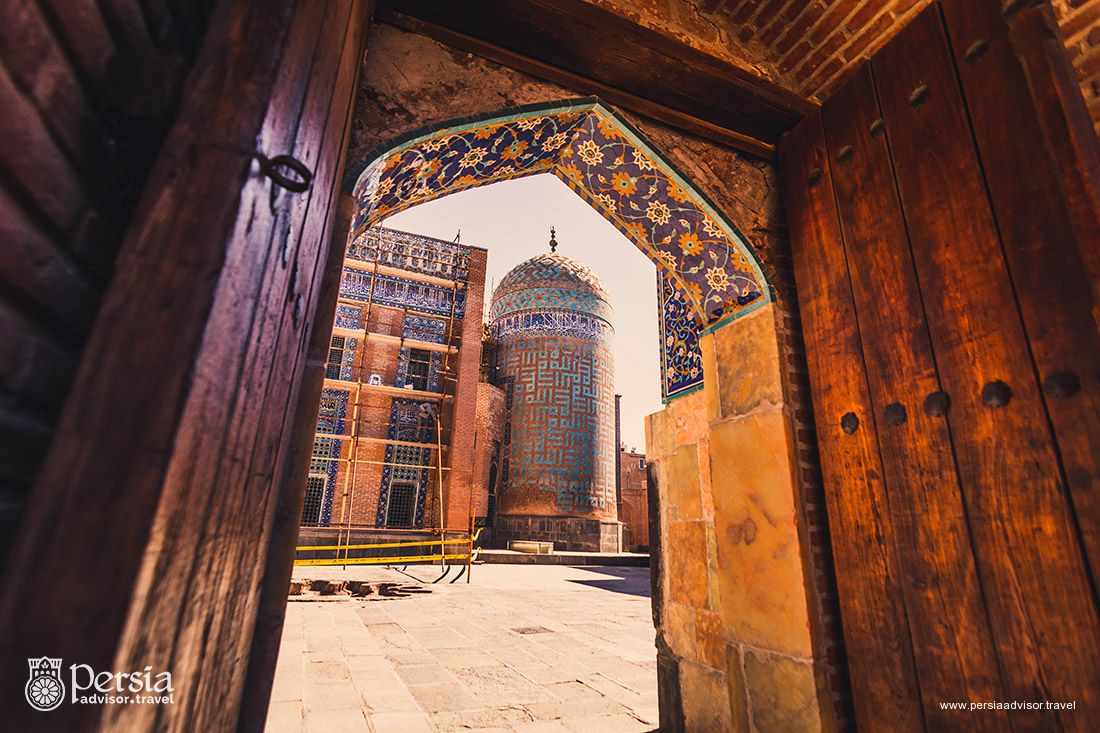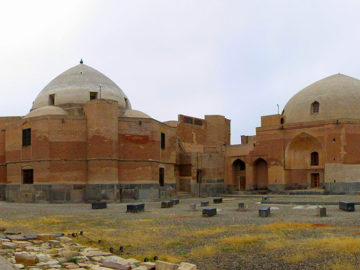
Sheikh Safi al-din Ardebili (1252 – 1334 CE) was a mystic, a poet, and the ancestor of Shah Ismail I the founder of Safavid dynasty. Sheikh Safi is also the father of Safaviyya Sufism. After his death, his descendants built a shrine on his gravestone beside his house and his Khanegah (a Sufi religious building) in Ardebil. This shrine is the most prominent Sufi Shrine and complete Khanegah. To honor Sheikh Safi al-din, his descendants, mostly Safavid kings, gradually added items to this widely revered religious ensemble of Safavid dynasty. The combination of Ilkhanid and Timurid architecture with fundamental principles of Sufism and spirituality led to the creation of a new spatial layout and decorative art that later influenced Safavid art and architecture.
The Sheikh Safi al-din ensemble resembles a tiny city with a variety of sections such as mosque, library, school, hospital, bazaar, mausoleum, bath, cistern, kitchen, bakery, offices, and houses. This is the most efficient utilization of accessible space to accommodate a variety of functions.

Three tomb towers exist in the complex. The oldest one, hidden behind two other towers was built to venerate Sheikh Safi al-din, and the biggest one known as Allah Allah is decorated with the countless repeated names of God in Arabic scripts with blue-glazed bricks. Although the complex is ascribed to Sheikh Safi al-din, other prominent individuals such as Shah Ismail I and his mother plus martyrs of Battle of Chaldiran (the first battle between Ottomans and Safavids) are buried at the site. To highlight the seven steps of Sufi mysticism, the route to Sheikh Safi al-din Shrine passes through seven segments, and eight gates separate various parts of the mausoleum representing the eight attitudes of Sufism.

Chilla Khana derived from Persian word Chehel (meaning forty), was a place for the Sufi ritual of Chilla. In Chilla, to withdraw from the world and pray in solitude, people went to Khalwa for forty days and nights.

Since several lanterns had lightened the hall for praying and memorizing Quran, this dazzling rectangular hall with its gold-painted ceilings is known as Ghandil Khaneh or lantern house. In 1539 CE Shah Tahmasp I ordered to knit a treasurable carpet for the hall, with its geometry reflected symmetrically on the ceiling. Currently, this most precious remnant carpet of Safavid era, known as Ardebil carpet is housed in the Victoria and Albert Museum of London. Unfortunately, the gold painted ceiling was collapsed after an earthquake.

Chini Khaneh with its honeycombed ceiling and suspended golden vaulted niches is a place to keep Shah Abbas I porcelain collection. A two-year war between Iran and Russian empire had led to the Treaty of Turkmenchay in 1828, Russians moved many of original books and precious porcelains from Sheikh Safi al-Din complex to Russia, among which many are in Hermitage museum.


